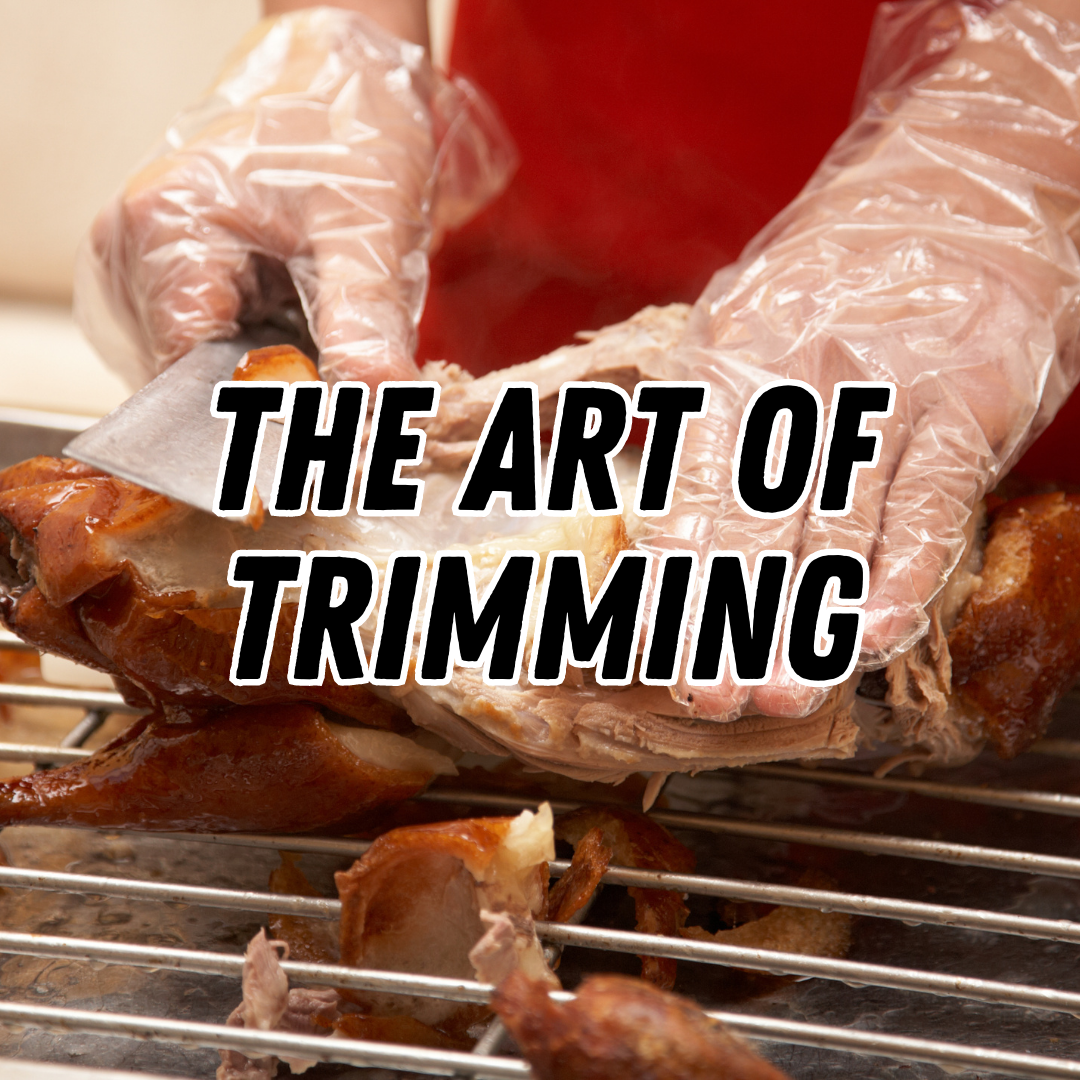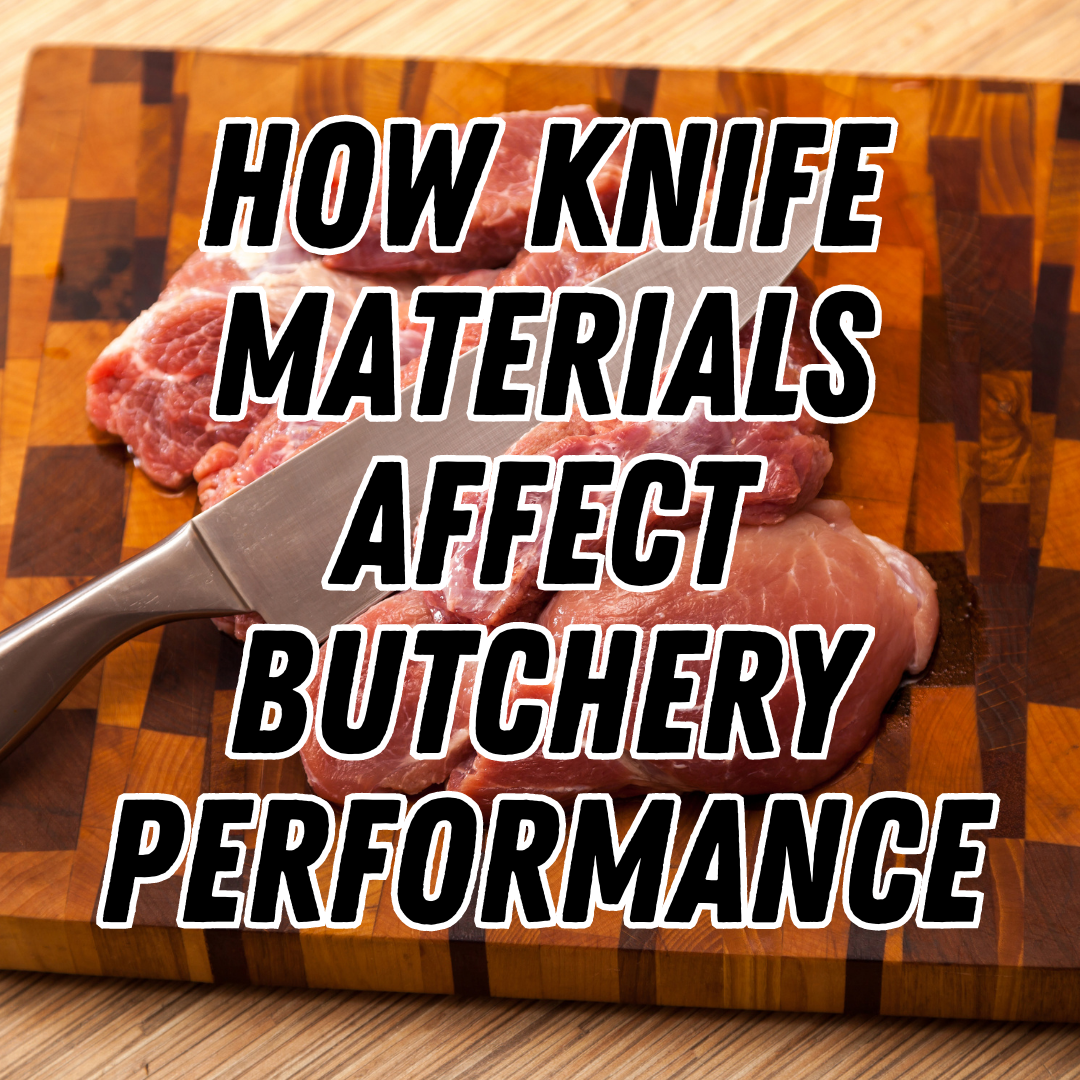As a culinary enthusiast, you understand how important it is to perfect the technique of trimming meat. Trimming improves the visual appeal of your dishes while also having a big impact on the flavour and texture of the finished product.
This article delves into various trimming procedures that use specialty blades, such as boning and trimming knives. We'll examine how trimming may elevate your recipes and provide tender and delicious outcomes. Furthermore, we'll give helpful hints for decreasing waste while ensuring your culinary masterpieces are spectacular.
So, sharpen your blades and join me on this trimming adventure!
Understanding Trimming Techniques
Let's look at the trimming knives that will have you gliding through the process quickly and precisely.
Boning Knife: Characteristics and Uses
Consider this knife the kitchen's elegant ballerina: slim, supple, and oh-so-versatile! The boning knife has a small blade, ideal for navigating bones and joints. This agile actor takes the front stage in any butcher's ensemble, whether removing meat from bones or quickly trimming sinew.
Trimming Knife: Features and Benefits
The trimming knife, the unassuming hero! This knife is a great worker thanks to its robust construction and gently curved blade. It's great for removing skin and cartilage and reducing extra fat. It may not be a pirouette like the boning knife, but its straightforward movements do the job like a pro.
Mastering Trimming Techniques
Meat trimming is an art that necessitates precision and ability. Mastering good grip and posture is essential for achieving the ideal cut. Consider the knife an extension of your hand, with a solid yet comfortable grip. Keep your fingers away from the blade to avoid any mistakes.
Techniques for Removing Fat and Connective Tissue
Trimming is more than just removing superfluous fat and tissue; it's an art form that improves the quality and softness of the meat. Explore these essential techniques:
Filleting and Deboning Techniques
Extracting bone-in cuts can be an intricate process. Visualise the bone's structure and glide the knife with finesse, skilfully separating the meat. With practice, you'll master the art of filleting and deboning, creating exquisite boneless pieces.
Butterflying and Silver Skin Removal
Butterflying is ideal for larger items such as roasts or fowl. Split the meat carefully to achieve uniform thickness and even cook throughout. Remove the silver skin, a thin, silvery membrane that can be rough and chewy. Lift it gently to reveal the soft meat beneath.
Remember that mastering these techniques requires time and effort. Begin with more straightforward cuts and progress to more sophisticated ones. With each slice, you get closer to culinary perfection.
Take a minute to admire the metamorphosis of the flesh as you trim. You're sculpting a canvas for flavours to dance on, not just reducing extra fat and tissue. Your culinary masterpieces will benefit from your attention to detail with each cut, resulting in a memorable eating experience for your guests.
Enhancing Flavour and Texture through Trimming
Trimming meat impacts the practicality of cooking and plays a significant role in elevating the flavour and texture of your dishes. Understanding how trimming affects taste and tenderness can transform your culinary creations.
How Trimming Affects Taste and Tenderness
Trimming away excess fat and connective tissue from meat allows the authentic flavours to shine through. By removing fat, you reduce the risk of greasy or oily dishes, ensuring a clean and rich taste. Additionally, trimming helps tenderise more arduous cuts, making them more succulent and enjoyable.
Utilising Trimming Techniques to Improve Meat Presentation
Aesthetics are crucial in the culinary world, and trimming techniques can significantly impact meat presentation. By skilfully trimming the meat, you create a visually appealing dish that entices diners at first glance.
Creating Uniform Cuts for Even Cooking
Consistency in meat thickness ensures even cooking throughout. By mastering trimming techniques, you achieve uniform cuts that cook evenly, preventing overcooked or undercooked portions and delivering a perfectly balanced dish.
Next, we'll explore minimising waste during trimming, allowing you to maximise ingredients and reduce costs without compromising quality and taste.
Minimising Waste in Meat Trimming
In the culinary world, waste reduction is not just a buzzword; it's a fundamental practice that separates great chefs from the rest. You must minimise waste in professional kitchens as you hone your trimming techniques.
The Importance of Waste Reduction in Professional Kitchens
Reducing waste demonstrates respect for ingredients and resources and contributes to the food industry's sustainability. By efficiently using every part of the meat, you can save costs, reduce environmental impact, and showcase your creativity.
Utilising Trimmed Meat Scraps for Other Dishes
Don't discard those trimmed meat scraps! Instead, transform them into delectable creations. Utilise trimmings to make flavourful stocks, hearty stews, or mouth-watering ground meat for burgers or meatballs.
Waste not, want not – these seemingly insignificant scraps can be a treasure trove of flavours waiting to be explored.
Sustainable Practices in Meat Handling and Disposal
Consider implementing sustainable practices in meat handling and disposal. Collaborate with local farmers or composting facilities to repurpose non-edible waste responsibly. Adopting eco-friendly packaging and mindful purchasing practices can further contribute to sustainability.
Advanced Trimming Techniques
Precision trimming becomes crucial for creating specialty cuts that elevate your dishes to new heights as you continue your culinary journey.
Precision Trimming for Specialty Cuts
Practice precision trimming to impress your guests and bring out the best in your ingredients. This involves refining your knife skills to create intricate and visually appealing cuts. Delicate knifework can turn a simple meal into a work of art.
Trimming for Sous Vide Cooking
Sous vide cooking relies on precise trimming to ensure even cooking and optimal flavour infusion. By removing excess fat and connective tissue, you'll prevent uneven texture and enhance the tenderness of your sous vide dishes.
Trimming for Specific Recipes and Dishes
Different recipes demand specific trimming techniques. For example, trimming a whole chicken requires different skills than preparing a tenderloin. Familiarise yourself with the unique requirements of each recipe to deliver outstanding results every time.
Tips for Mastering Complex Trimming Challenges
Complex trimming problems can be intimidating, but don't worry! You will overcome any hurdle with patience and practice. Pay attention to tutorials, get advice from experienced chefs, and don't fear trying new things.
Be patient with yourself; advanced trimming techniques take time and devotion to perfect. Soon, you'll be a trimming genius, wowing everyone with your culinary prowess!
Conclusion
Throughout this blog post, we've looked at numerous techniques for using boning and trimming knives to transform regular pieces of meat into extraordinary dishes. Cutting your meat correctly can improve its flavour and texture, taking your meals to new heights. Adopting sustainable practices and minimising waste also showcase your commitment to responsible cooking.
With dedication, precision, and a dash of creativity, you'll soon become a trimming maestro, delighting taste buds and impressing diners with every perfectly trimmed masterpiece.
Enjoy your trims and bon appetite!




